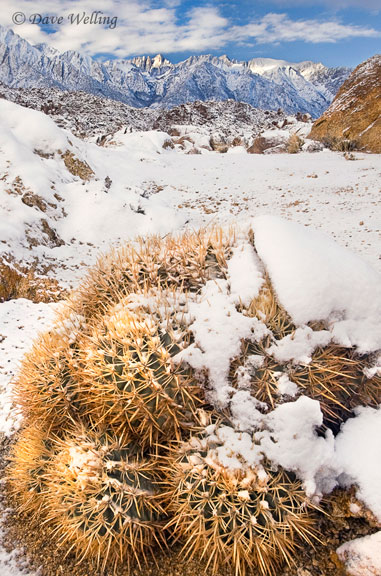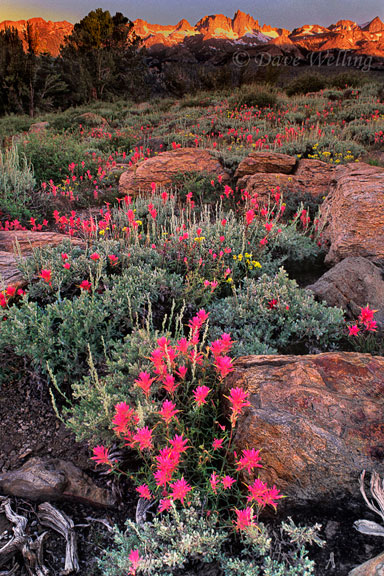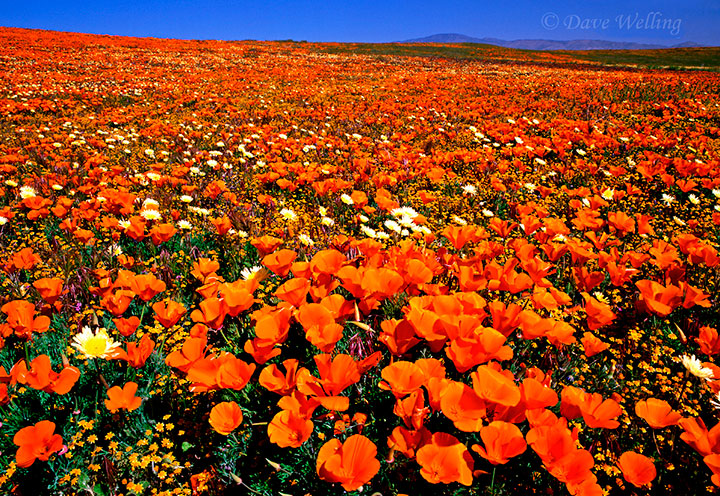A strong, sharply focused subject in your landscape foreground photographed at a low angle can provide a very different perspective of looking at grand scenics. Try to find strong elements that are mid-range tonality for your prominent subject. Very dark or overly bright elements can detract your viewer from "entering" the image.
For example, look at this winter scene from the Eastern Sierras. Soft lighting on the cactus keeps the mid-range tonality and helps draw the viewer in. Apparent focus is maintained throughout the image to guide the viewer over the scene without centering only on the cactus. The low angle is intriguing. Most people see the world from five to six feet above ground, not at eye level with a cactus.

The same approach is used here with the Lemmon's Paintbrush and Minaret's Vista, which uses the pink wildflowers as the prominent element to pull the viewer into the landscape. The whole scene is in apparent focus to allow the eye to travel the whole scene. The angle of view here is not as low, to insure the distant mountains would not be obscured by middle distance foliage. Always check your LCD at 100%, or your viewfinder, for extraneous elements (like the foliage) to ensure you have a clean composition.

When your subject encompasses the whole scene, you can still utilize different angles of the subject to modify the overall composition. In the field of California Poppies (eschscholtzia californica) the poppies are the subject. Getting low and close to the nearest poppies gives a different perspective to the viewer here and helps pull the viewer in. Again, a small aperture (large aperture number) is used to keep the whole image in apparent focus.

About the author: Dave Welling is a full time professional photographer specializing in wildlife, landscape and nature with over 75,000 6x7, 6x4.5, and 35mm film and digital images. He has been capturing evocative images of the natural world for over 25 years, producing the highest quality images for publication. His images often capture unique behavioral characteristics of wildlife or special lighting or weather conditions of landscapes. You can see more of his work at www.strikingnatureimagesbydavewelling.com.
Have something to add to the story? Leave a comment or email editor@outdoorphotographyguide.com.

Shots like these are great however I seem to have issues with my gear and manually focusing to the "hyperlocal distance." I have the knowledge (the how and what) yet when I turn the focus ring to that magic number on the distance scale my entire image comes out soft (the why is what eludes me). I'm using a Canon 5D mark II with a Tamron 24-70mm 2.8 which yields sharp images when auto focusing on an object (say a face) yet when I manually turn the focus ring to the HFD it all goes soft, so something's a miss here. Any thoughts, advice, or direction would be an immense help.
I really appreciate this type of short, to-the-point and well written practical advice. Thank you.